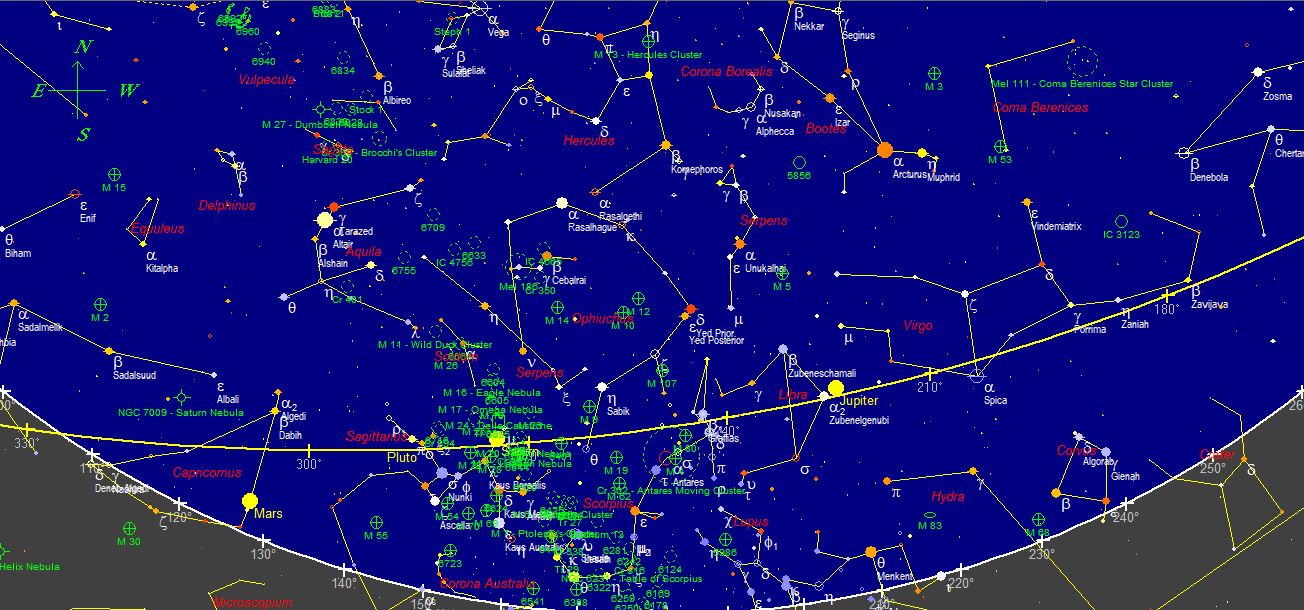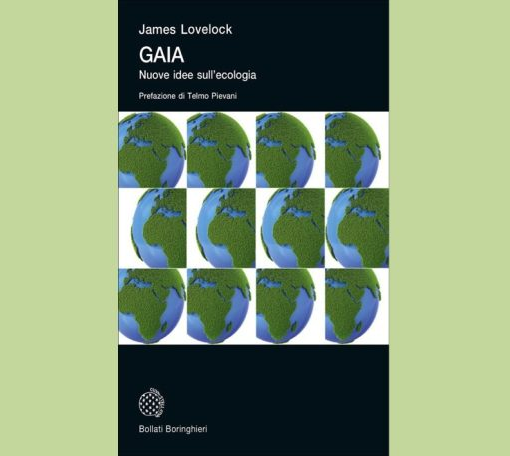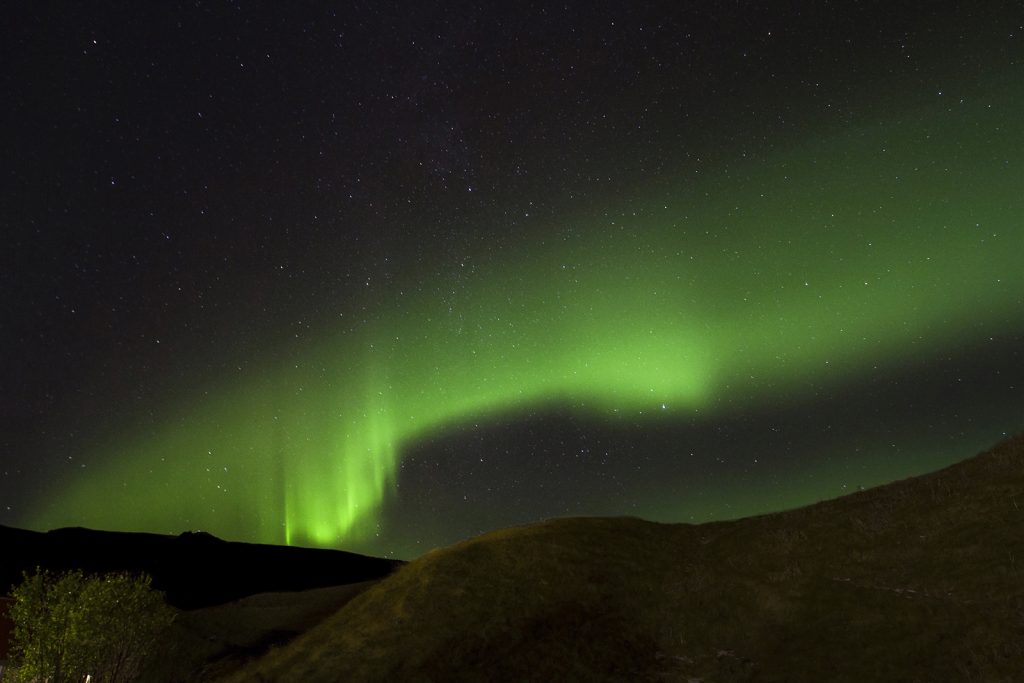
Photographing something that emits light, that is a source, for the photographer is like taking a peek into hyperspace and then descending back to earth and having to report to others.
“We need to be able to convey everything into an emotion that is also perceivable by others. Otherwise, the risk is to remain fascinated by what we have seen but not to be taken seriously because we have not been able to narrate that.”
From this phrase, found in some old photography books, I want to start to tell the story of my first encounter with the Northern Lights, hoping to be able to involve you in the emotion I felt.
During the summer I had expressed to my adventure friend Maurizio the desire to photograph the Northern Lights one day, and he, who misses nothing, a month later proposes me a journey to Iceland. Here is the opportunity!
Iceland is a paradise for any landscape photographer and naturalist, but returning from there without a snapshot of the sunrise would have been like having reached the end of a puzzle and discovering that the last piece is missing.
We are all traveling on the bus that will take us to Vik, a small village located on the south coast of Iceland; from the glass of my window, I do not look at the landscapes but at the sky. It is clear, it is getting dark and the sky is extraordinarily limpid. I check the site on the Northern Lights forecast several times and find that the value of two (there is a scale for the intensity and the percentage of probability) has dropped to zero. Few hopes, too bad, with such a clear sky.
In the dining room of the small residence, breathtaking images of the dawn taken by an Icelandic photographer are projected, and I think that perhaps that could be the only encounter with this phenomenon of the sky. Quick dinner and then out, I don’t need to double-check the equipment, I’ve already done it more than once: charged batteries, machines covered with a blanket, times, ISO, and aperture settings.
A local guide takes us (I was a member of a photographic group) along a path behind a mountain, completely in the dark; the sky is incredible, for the first time I see the stars up to the horizon that connects heaven and earth, I recognize some constellations and as an astronomy enthusiast I realize that we are facing south-east and behind we have a mountain that prevents us from seeing of the other half of the sky. This does not fascinate me very much, I do not see the North Star, the north is slightly behind us, and when the aurora forecasts are low the only hope is to look towards the north.
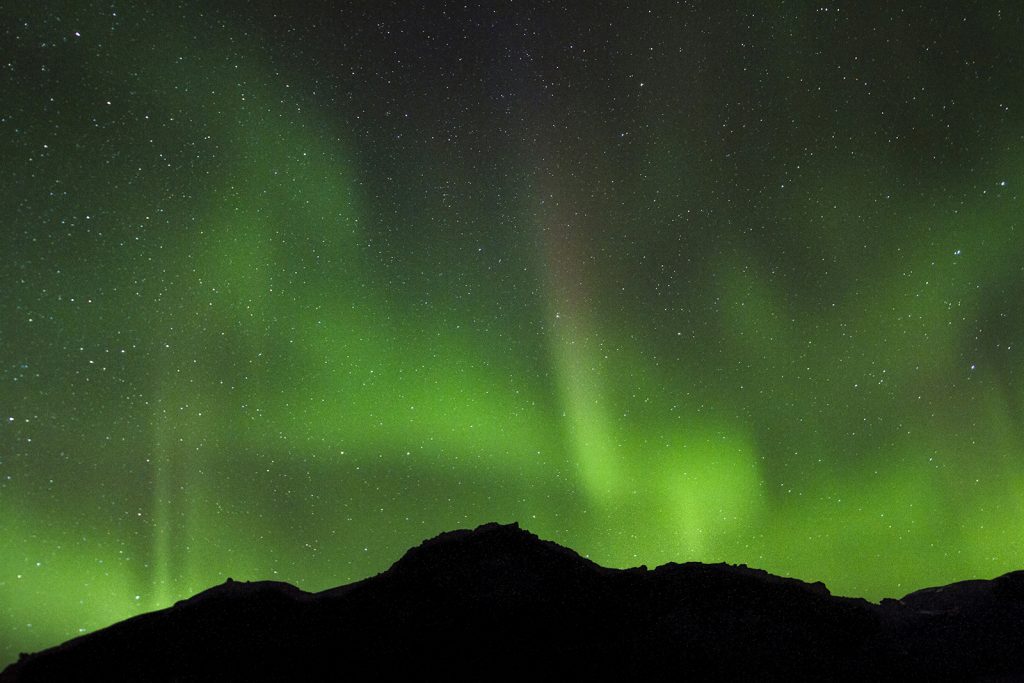
When, after about an hour, almost everyone withdraws and goes back to the room, I go back to the beginning of the path to discover the other part of the sky. I am alone or at least I think, I want to stay, I want to try, it could be the only opportunity. A photographer approaches and asks me if I’m going to stay outside, he too wants to try to stay maybe just to get cold, and so we remain together just hoping. We go up a hill and after about an hour of conversation about the photographic world we notice a glow towards the north. It is weak but maybe it’s that; it is just past one in the morning. We take some shots: something green appears on the monitors of our cameras. The light, however, disappears after a few minutes. It already seems a lot to us, given that the forecasts gave zero.
But the surprises are not over, it is close to two in the morning, the cold and the wind are now really felt. We decide to go down closer to the lodgings, the strong Icelandic wind threatens to drop our equipment. We don’t want to go back right away, we waste time, we exchange a few more words, but always facing that way ….
The glow reappears, and this time, it seems more intense. We run to a darker area and get ready. The first curves, the first intense lines: it’s the Northern Lights!
We start shooting, I don’t know how I manage to call my friend Maurizio on the phone and tell him to come out immediately, he was practically sleeping dressed because he was out in an instant. The first shots with exposures of seconds and here the green beam of the aurora appear clearly visible on the monitor. I am more relaxed and happy, we have the shot to report. I shoot non-stop, and I also try to change some parameters.
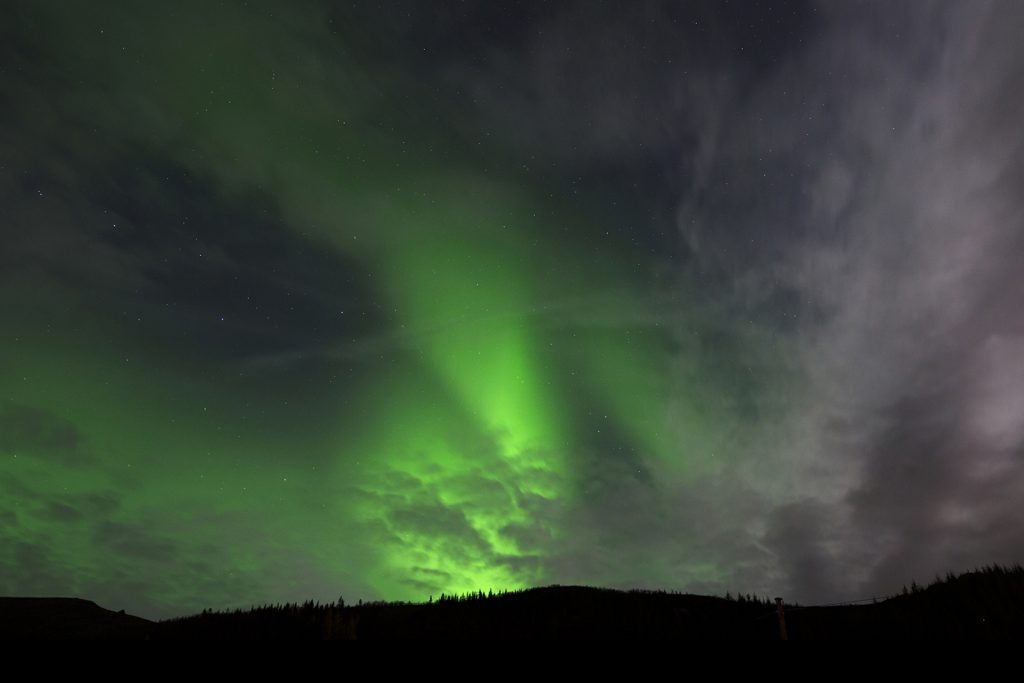
We are really happy. The green starts to fade but my night companions and I continue to talk about the times used, the ISO set, but above all how it was exciting and how we were stubborn in staying in the cold to try. Now we can go back, but first, we take a walk towards a dark area and try some shots, even if by now the intensity has decreased. At three in the morning the last photo of the day.
Now the warmth of the room and the blankets is really nice, we sleep more relaxed but not before having made an immediate backup of those photos that we absolutely do not want to lose.
The next evening we try again, but the weather is not right, clouds and snow around four in the morning. It doesn’t matter, we have been lucky but above all, we have been good at taking advantage of the opportunity, the puzzle is complete: we also have the last piece.
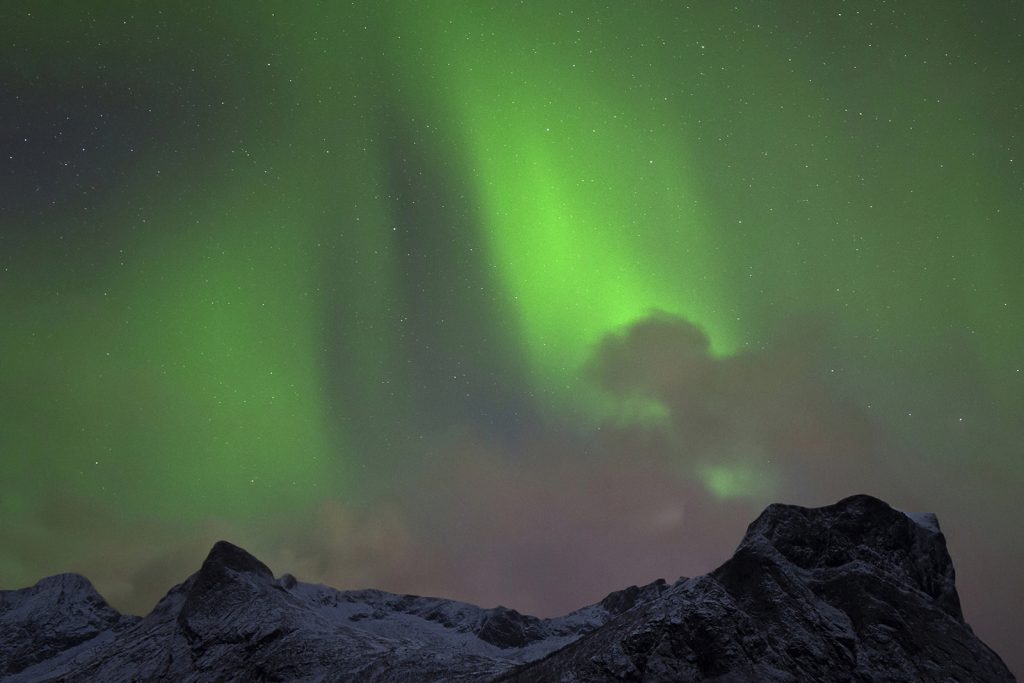
Credits
Author: Giancarlo Neccia is an amateur astronomer and astrophotographer of the “La via delle Stelle” association of which he is vice president. He is the technical manager of the “La via delle stelle” observatory in Montelanico (Rome) and the Maurizio Cassandra observatory in Carpineto Romano (Rome) equipped with a 400 mm Marcon telescope.
Translation by Maria Antonietta Sessa


